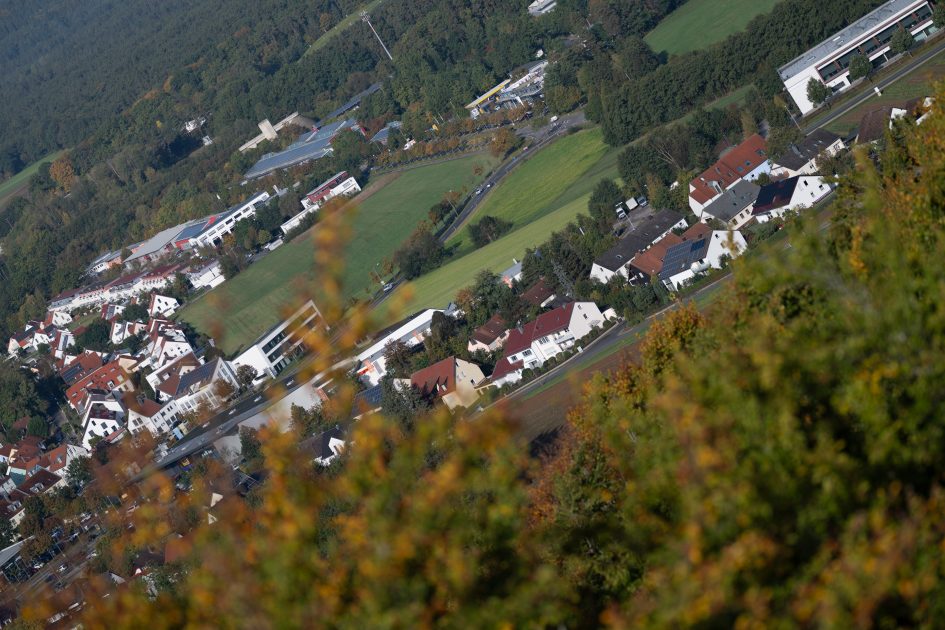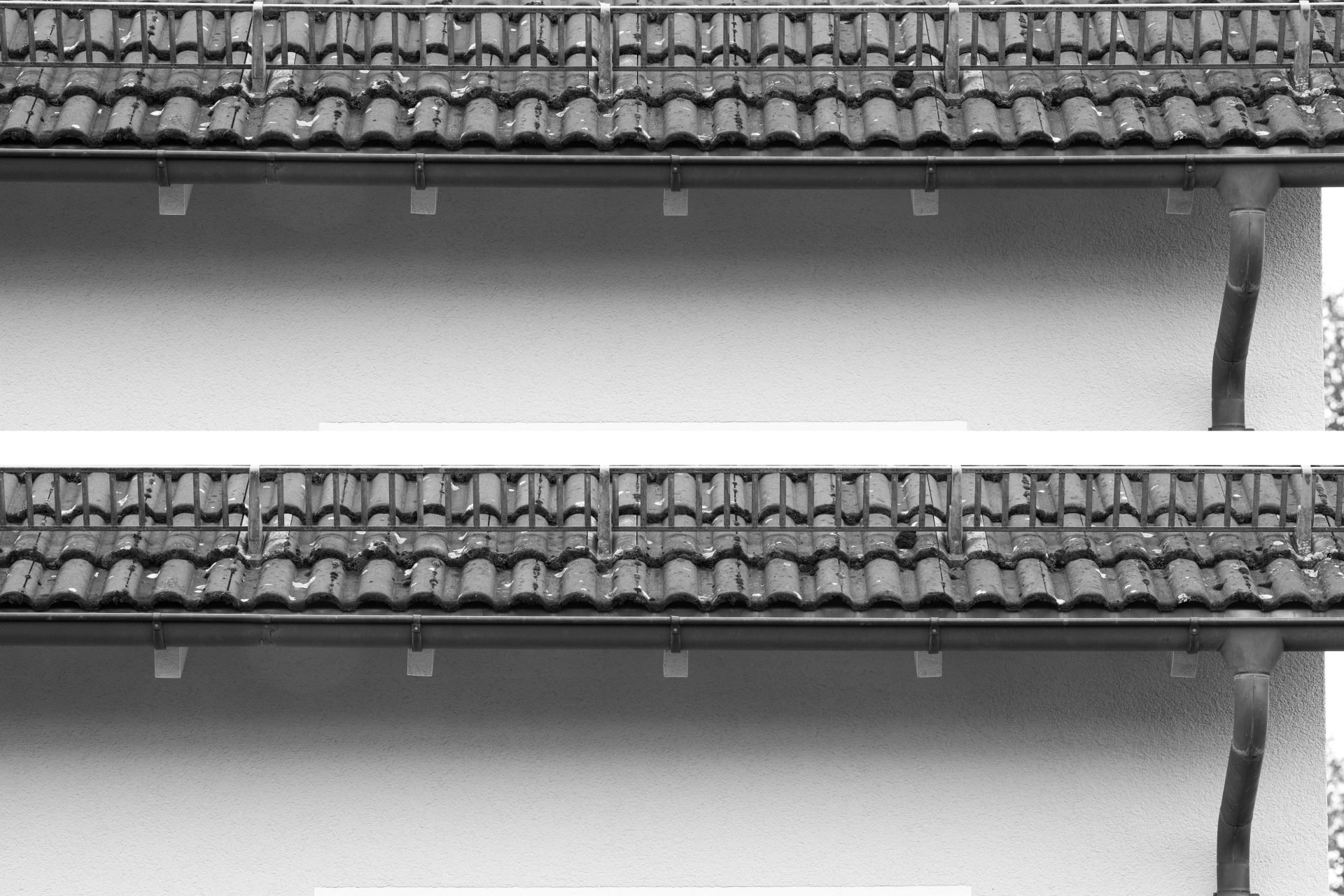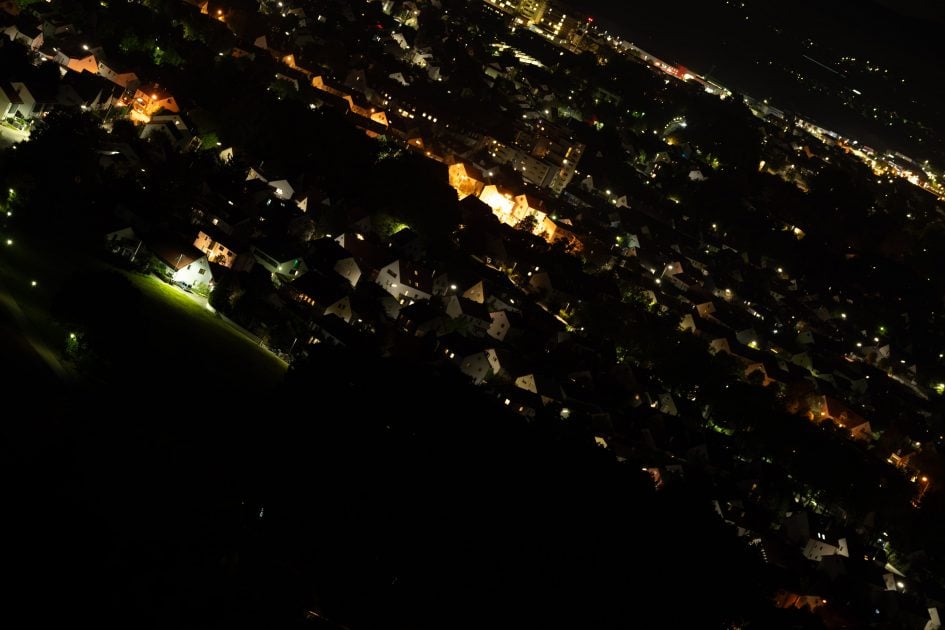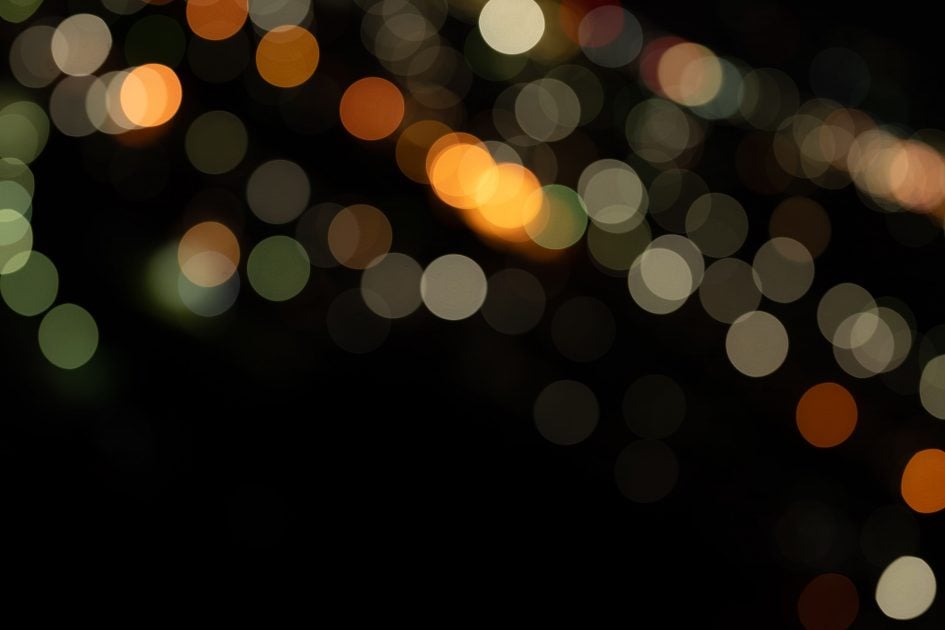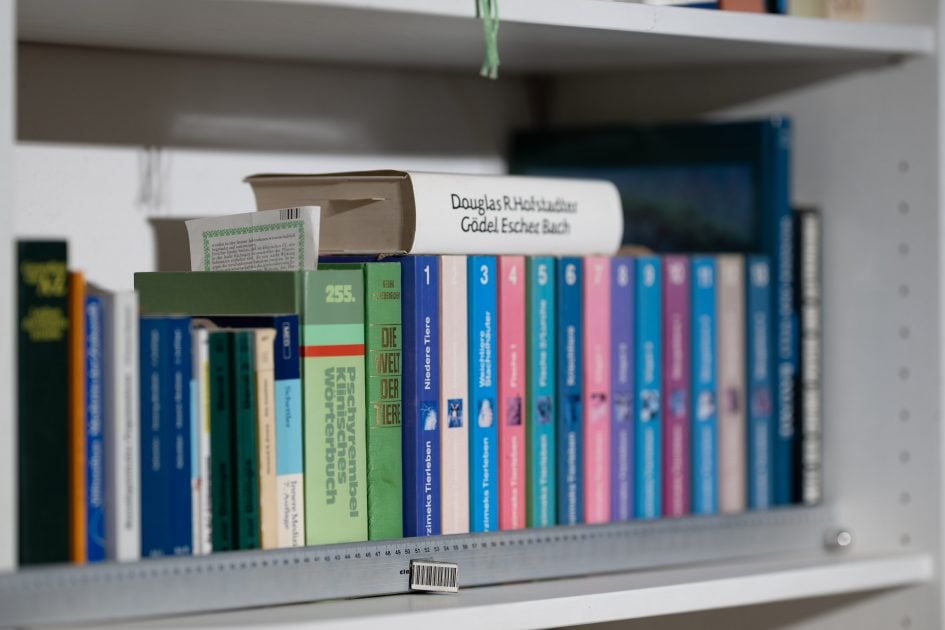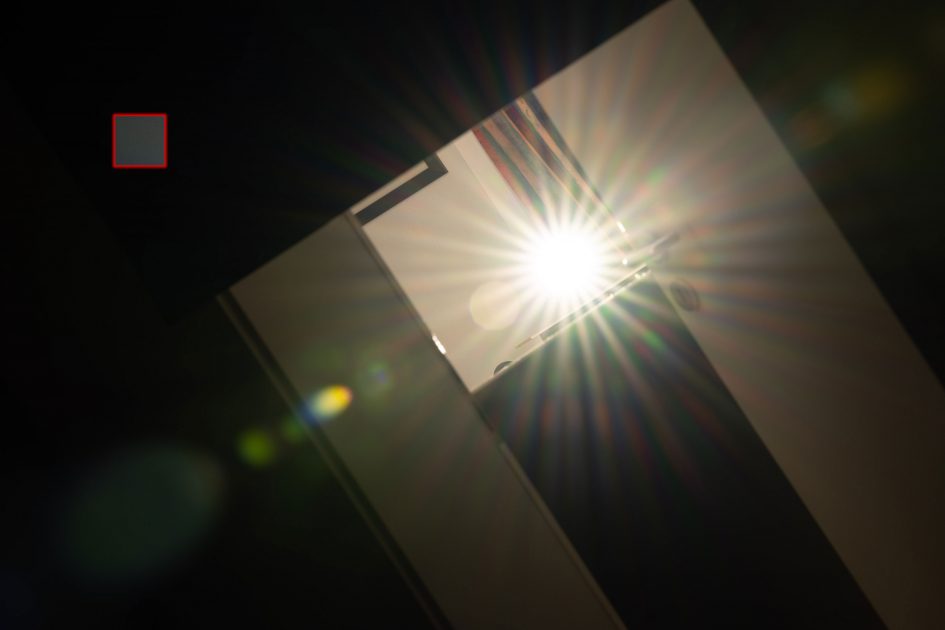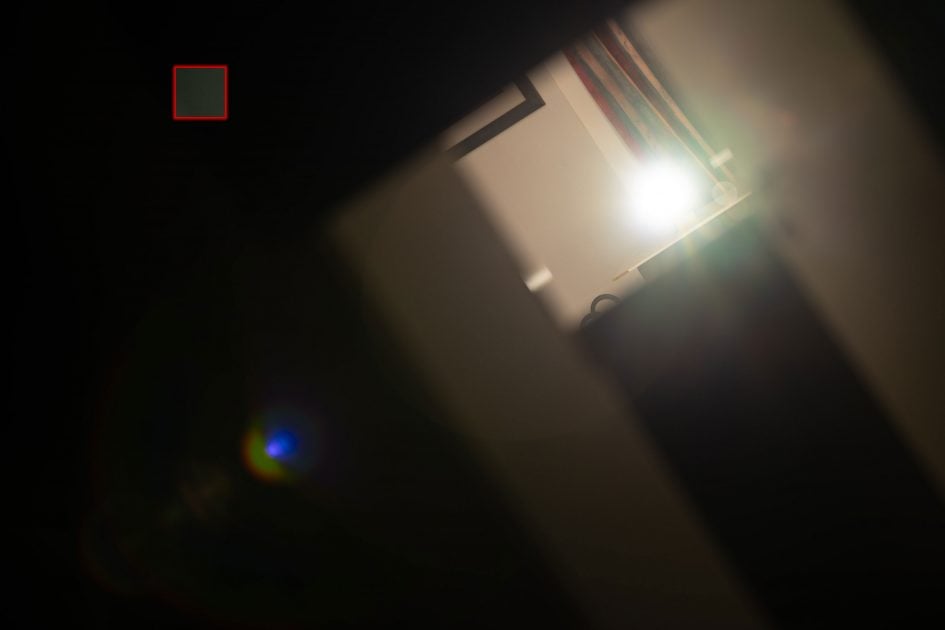Nikon Z 135mm f1.8 S Plena review
-
-
Written by Thomas
Quality
Longitudinal Chromatic Aberration and focus shift
Lenses with focal ratios of f2.8 or larger are often prone to longitudinal color aberrations (loCA, a.k.a. “axial color” or “bokeh CA”). These show up as magenta coloration in the foreground and greenish hues in the background and are not easily corrected in post-processing. The Z 135mm f1.8 S Plena shows a bit of loCA wide open and even at f2.8, but not too much:
Nikon Z 135mm f1.8 S Plena Longitudinal Chromatic Aberration (loCA)
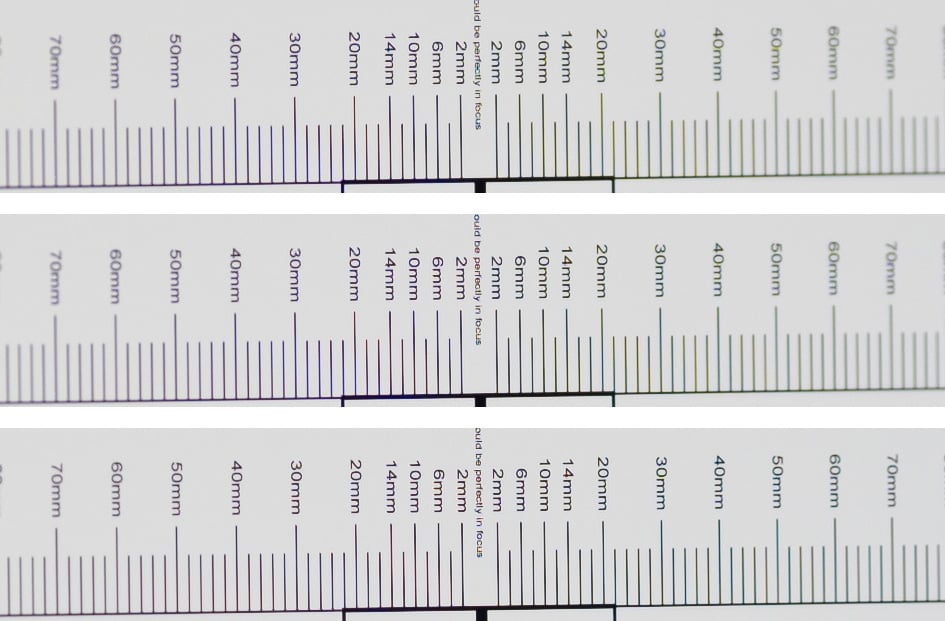
100% crops, from top to bottom: f1.8, f2.0, f2.8; left = foreground, right = background
The Plena shows no focus shift, background and foreground sharpen up equally fast when the lens is stopped down. For comparison have a look at the Nikon Z 85mm f1.2 S which shows even less loCA and the Sigma 135mm f1.8 Art which looks pretty similar to the Plena.
The following real life shot shows that the Z 135mm f1.8 S Plena produces a faint purple outlining around high-contrast edges in the focal plane and a slight bit of greenish outlining around background subjects. That’s comparable to the Nikon Z 85mm f1.2 S (at f1.2 and f1.8) and slightly behind the Sigma 135mm f1.8 Art.
Above: Nikon Z 135mm f1.8 S Plena at f1.8; 100% crop; click image for 4k version, here for large original
The second image on the samples page of the fountain backlit by the sun also shows a little bit of coloration in the air bubbles. But this is a real torture test. I wouldn’t worry about this small amount of loCA from the Plena.
Sharpness and contrast
Let’s have a look at the theoretical performance of the new Nikon Z 135mm f1.8 S Plena and compare it to the performance of the Sigma 135mm f1.8 Art and Nikon Z 85mm f1.2 S:
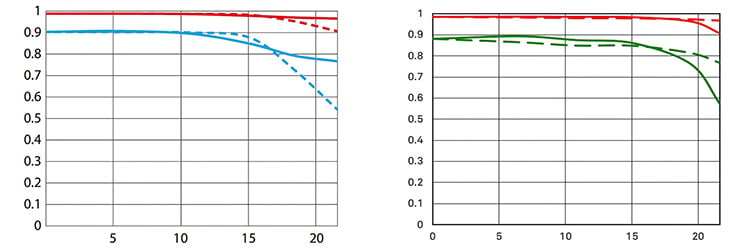
Above: Nikon Z 135mm f1.8 S Plena at f1.8 (left), Sigma 135mm f1.8 Art at f1.8 (right)
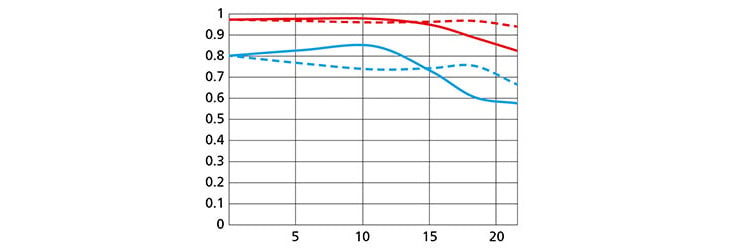
Above: Nikon Z 85mm f1.2 S at f1.2
These MTF charts show the computed lens-performance wide open without influence of diffraction at 10 line-pairs/mm (in red) and 30 lp/mm (in blue). Higher values are better (more contrast) and the closer the dotted and solid lines are together the less astigmatism (= resolution depends on the orientation of the test-pattern) the lens has. The x-axis displays the “image height” which is the distance from the optical axis (=center of the sensor) in mm. I’ll show you the real-life performance at 4 mm (“center”), 13 mm (DX-corner), and 20 mm (FX-corner) on a 45MP Nikon Z8 camera.
From the charts the Nikon Z 135mm f1.8 S Plena and the Sigma 135mm f1.8 Art look very similar. And both look better than the Nikon Z 85mm f1.2 S. But don’t forget that the Z 85mm f1.2 S is shown here at f1.2 which is over one stop more challenging than the f1.8 of the 135mm lenses.
So, let’s see how this theoretical performance of Nikon’s new Z-Nikkor translates into real life results in the sharpness test based on Siemens-stars and compare “apples to apples”. Processing was done in Lightroom 12.5/CRAW 15.5 from RAW to Adobe Color profile with correction from the lens profile compensating CA but not distortions. Diffraction compensation was OFF. Noise-reduction is set to 0, sharpening to 50/0.5/36/10, with no extra tone, color, or saturation adjustment. White-balance was adjusted to a neutral white and I did some exposure compensation to make the brightness of all crops match. So you will not see light fall-off in the corners.
The following 100% crops show the Nikon Z 135mm f1.8 S Plena from f1.8 down to f11 compared to the Sigma 135mm f1.8 Art (on FTZ adapter) and Nikon Z 85mm f1.2 S at f1.8 (shot on a Nikon D7).
Nikon Z 135mm f1.8 S Plena compared; 100% crop from center, DX-corner, FX-corner

Above: Nikon Z 135mm f1.8 S Plena at f1.8

Above: Sigma 135mm f1.8 Art at f1.8; also available at f2.0, f2.8, f4.0, f5.6, f8.0, f11

Above: Nikon Z 85mm f1.2 S at f1.8; also available at f1.2, f1.4, f2.0, f2.8, f4.0, f5.6, f8.0, f11
Both the Nikon Plena and the Sigma Art look very similar with the Plena showing a slightly higher acuity in the center and a higher contrast in the FX-corner while the Sigma Art has a slightly sharper DX-corner. But differences are really minimal. Stopped down to f1.8 the Z 85mm f1.2 S has a clearly softer FX-corner, a slightly softer center and an astonishingly sharp DX-corner. Field-curvature of the Plena is minimal at the testing distance of 6m.
When stopping the Plena down to f2.0 there is a very slight increase in resolution in the center and again when stopped down to f2.8. The FX-corner profits from stepping down to f4.0 where the lens is at its peak performance.

Above: Nikon Z 135mm f1.8 S Plena at f2.0

Above: Nikon Z 135mm f1.8 S Plena at f2.8

Above: Nikon Z 135mm f1.8 S Plena at f4.0

Above: Nikon Z 135mm f1.8 S Plena at f5.6; also available at f8.0, f11
The Nikon Z 135mm f1.8 S Plena produces excellent sharpness even wide open. This makes the Plena one of the sharpest lenses around.
Performance at long distances
The Siemens-star test-targets are shot at a distance of 45x focal length (i.e. at around 6m for 135mm focal length). But performance of lenses also depends on the shooting distance. Therefore I did another series of test-shots of a city around 1 km away. Processing was done in Lightroom 12.5/CRAW 15.5 from RAW to Adobe Color profile with the lens profile compensating CA, distortions, and vignetting. Diffraction compensation was OFF. Noise-reduction is set to 0, sharpening to 50/0.5/36/10, with no extra tone, color, or saturation adjustment. All shots were made from a heavy tripod at ISO 64 and image stabilization switched off.
The following images show the complete scene wide open plus 100% crops from the center, DX-corner, and FX-corner at various apertures. All crops in a row are from the same image so there is no compensation for field curvature. For comparison I shot the Sigma 135mm f1.8 Art only minutes apart. You can access the large originals but please respect our copyright and only use those images for personal use.
Above: Nikon Z 135mm f1.8 S Plena at f1.8; click image for 4k version, here fore large original
Above: Nikon Z 135mm f1.8 S Plena at f1.8
Above: Sigma 135mm f1.8 Art at f1.8; click image for 4k version, here fore large original; 100% crops also available at f2.0, f2.8, f4.0, f5.6, f8.0, f11

Above: Nikon Z 135mm f1.8 S Plena at f2.0

Above: Nikon Z 135mm f1.8 S Plena at f2.8

Above: Nikon Z 135mm f1.8 S Plena at f4.0; also available at f5.6, f8.0, f11
Again, the Nikon Z 135mm f1.8 S Plena proves to be an excellent performer even when used fully open. Stopping the Plena further down produces only small improvements in acuity until at f4.0 the lens looks perfectly sharp across the full-frame sensor – even when pixel-peeping. The Sigma 135mm f1.8 Art doesn’t show the same level of definition across the full-frame although it still produces very good results. The test also shows that the Plena has astonishingly little light fall-off – even at f1.8. Have a look at the next section for more details.
Vignetting and distortions
To make it easier to see light fall-off in the corners of a full-frame sensor I’ve arranged a series of three shots each with the Plena from f1.8 to f2.8. All images were developed from RAW to the same brightness in the center and are shown with vignette correction from the lens profile set to 0% (1st row) resp. 100% (2nd row):
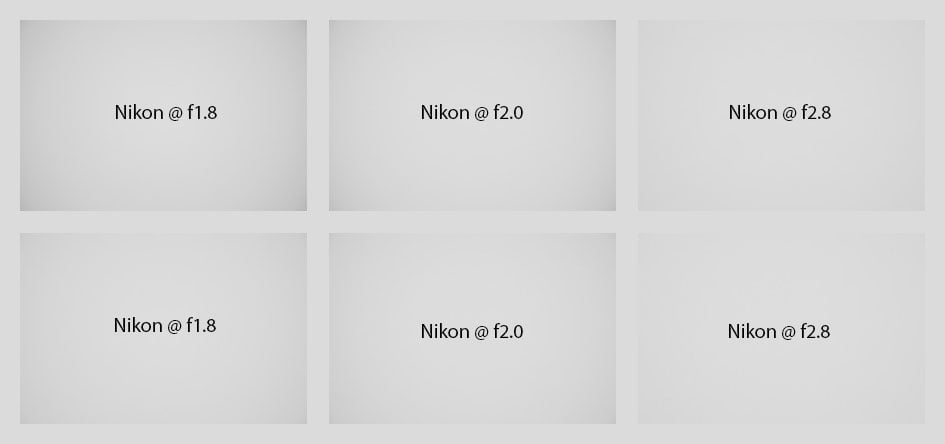
Above: Nikon Z 135mm f1.8 S Plena at f1.8, f2.0, f2.8
For comparison have a look at the results from the Sigma 135mm f1.8 Art:
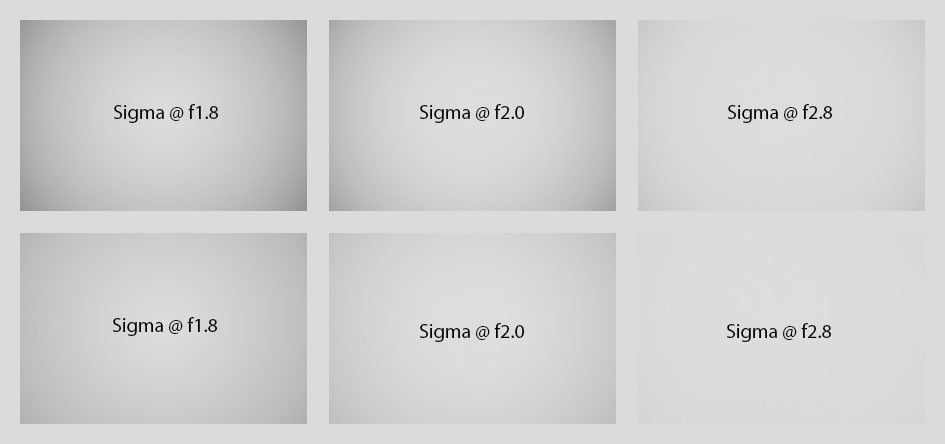
Above: Sigma 135mm f1.8 Art at f1.8, f2.0, f2.8
The sample images above show that even without lens profile applied vignetting of the Plena is exceptionally mild even at f1.8. With vignette correction set to 100% the extreme corners of the Plena are lifted by about 1/3 EV at f1.8 which makes vignetting almost imperceptible. With the Sigma Art the extreme corners are lifted by about 1/2 EV at f1.8 but vignetting is still visibly stronger than from the Plena. Btw.: Adobe changed how they handle vignette control as their RAW converter does no longer automatically apply what was set in camera. You need to activate the lens profile (e. g. in Lightroom) and than have sliders to control the strength of vignetting and distortion correction between 0 and 200%. That’s much less confusing than before. Unfortunately of the Z-Nikkors I tested lately only the Z 180-600mm profits from this new handling of lens profiles.
So with the new Lightroom/CRAW version you just need to pull the slider for distortion correction in the lens profile back to 0 to see the uncorrected distortions of the Plena which are of a mild pin-cushion type. The lens profile corrects them well. See the following composite image showing the upper half of two images shot as RAW:
Distortions: Nikon Z 135mm f1.8 S Plena, distortion correction 0% (top) or 100% (bottom); click image for 4k version
Rendering of point-light sources at night-shots
Night-shots pose a different challenge for lenses as the contrast is even higher than under bright sun and point-light sources can reveal some weaknesses such as coma, haloing and colour-aberrations that do not show up as prominently in other test-shots. The 100% crops below the main image show the effect of coma in the FX-corner of the Nikon Z 135mm f1.8 S Plena at various apertures:
Above: Nikon Z 135mm f1.8 S Plena at f1.8; click image for 4k version, here for large original

Above from left to right: Nikon Z 135mm f1.8 S Plena; 100% crops from the FX-corner at f1.8, f2.0, f2.8
The Nikon Z 135mm f1.8 S Plena is practically free of coma.
Bokeh quality
This test is for the rendering of point-light sources in an out-of-focus background. The circle of confusion that is produced by this test is pretty indicative of Bokeh performance in the background. Ideally the out-of-focus image of the point-light is evenly lit and perfectly circular, with no “onion-rings”, and without coloration. Large aperture lenses normally produce an effect known as “cat’s eye” the further away from the optical axis the point-light is projected. This is due to optical vignetting in the lens barrel when light enters the lens from an angle.
The following crops at different apertures are from near the center, DX-corner, and FX-corner resized to make them comparable across all my reviews. For comparison I shot the Sigma 135mm f1.8 Art only minutes apart. I’ve also added the Nikon Z 85mm f1.2 S at f1.2 and f1.8 which I shot another day.
Above: Nikon Z 135mm f1.8 S Plena at f1.8; click image for 4k version
Above: Nikon Z 135mm f1.8 S Plena at f1.8; click image for 100% crops
Above: Sigma 135mm f1.8 Art at f1.8; click image for 4k version, 100% crops available at f1.8, f2.0, f2.8, f4.0
Above: Nikon Z 85mm f1.2 S at f1.2; click image for 4k version
Above: Nikon Z 85mm f1.2 S at f1.8; click image for 100% crops, also available at f1.4, f2.8
Above: Nikon Z 135mm f1.8 S Plena at f2.0; click image for 100% crops
Above: Nikon Z 135mm f1.8 S Plena at f2.8; click image for 100% crops
Above: Nikon Z 135mm f1.8 S Plena at f4.0; click image for 100% crops
The diameter of the Bokeh balls in the center is determined by the entrance pupil of the lens. So, the diameter of the left crop from the Plena and the Sigma Art should be identical – which they are not as I incidentally focused the Sigma a little closer which led to a slightly higher magnification. But other than that the central Bokeh balls of both lenses look almost indistinguishable with a smooth texture, no onion rings, and only a slight outline without coloration from loCA. But looking towards the DX- and FX-corner differences become very clear: The Sigma Art develops cat’s eyes much faster and stronger than the Plena so Bokeh of the Sigma has a more “swirly” appearance.
Regarding the diameter of the Bokeh balls the Nikon Z 85mm f1.2 S at f1.2 is only slightly (6%) behind the Plena at f1.8 which is a negligible difference. Smoothness of the interior is comparable and outlining seems even lower than from the Plena. But like the Sigma Art, the Z 85mm f1.2 S develops pronounced cat’s eyes at f1.2 when looking towards the corners. Stopping down to f1.8 reduces the effect greatly – but then the diameter of the Bokeh balls becomes 37% smaller than from the Plena, which is very visible. Plus the edges of the aperture blades can already be seen.
Let’s see how this analysis of out-of-focus point-light sources translates into Bokeh-performance shooting a book-shelf. Crops are from the foreground, middle-ground, and background resized to make them comparable across all my reviews. For comparison I shot the Sigma 135mm f1.8 Art under identical conditions and added the Nikon Z 85mm f1.2 S to the mix – at f1.2 as well as at f1.8:
Above: Nikon Z 135mm f1.8 S Plena at f1.8; click image for 4k version, here for large original
Above: Nikon Z 135mm f1.8 S Plena at f1.8; click image for 4k version, here for large original
Above: Sigma 135mm f1.8 Art at f1.8; click image for 4k version, here for large original
Above: Nikon Z 85mm f1.2 S at f1.2; click image for 4k version, here for large original
Above: Nikon Z 85mm f1.2 S at f1.8; click image for 4k version, here for large original
The Z 85mm f1.2 S clearly produces the softest transition zone behind the point of focus and its background blur is also superior – at f1.2. But comparing all three lenses at f1.8 makes them look very similar in the transition zone and background with the Sigma Art producing a slightly more nervous Bokeh. In the foreground differences are more pronounced with the Plena producing the softest foreground and the Z 85mm f1.2 S looking more nervous than the Sigma Art.
Looking at the specular highlight on the small steel ball to the right side of the ruler both Z-Nikkors look almost identical while the Sigma Art (again) shows a strong cat’s eye effect:

Above from left to right: Nikon Z 135mm f1.8 S Plena, Sigma 135mm f1.8 Art, Nikon Z 85mm f1.2 S, all at f1.8
Looking at another crop (now at 100%) from the same image showing the ruler in the transition zone confirms again, that the Nikon Z 85mm f1.2 S has the smoothest transition zone with no tendency for double contours at f1.2. Stopping the lens down to f1.8 evens the results a bit, but still the Nikon Z 85mm f1.2 S renders the softest Bokeh in the transition zone of the three lenses while the Sigma Art seems relatively harsh with a slight tendency for double contours.

Above: Nikon Z 135mm f1.8 S Plena at f1.8; click image for 4k version, here for large original

Above: Sigma 135mm f1.8 Art at f1.8; click image for 4k version, here for large original

Above: Nikon Z 85mm f1.2 S at f1.2; click image for 4k version, here for large original

Above: Nikon Z 85mm f1.2 S at f1.8; click image for 4k version, here for large original
Torture-testing the Z 135mm f1.8 S Plena with branches against a bright sky did not show a tendency for double contours in the farther background. All in all Bokeh of the Plena is sharing the top spot of all lenses I’ve tested so far with the Nikon Z 85mm f1.2 S. Both have a slightly different character: If you want/need uniformly sized Bokeh balls in the background across the frame the Plena is unmatched, if you’re after the smoothest transition zone the Z 85mm f1.2 S is the best.
Now, if you’re curious how this all shapes up when shooting portraiture have a look at the next section.
Portrait performance
85mm focal length may be the classical choice for portraits on a full-frame camera for upper body or full body shots but if you want/need more distance to your subject or prefer a tighter frame without getting too close to your subject 135mm focal length is certainly a good alternative. Let’s see how the Plena fares in this use-case (shooting distance was around 2.5m):
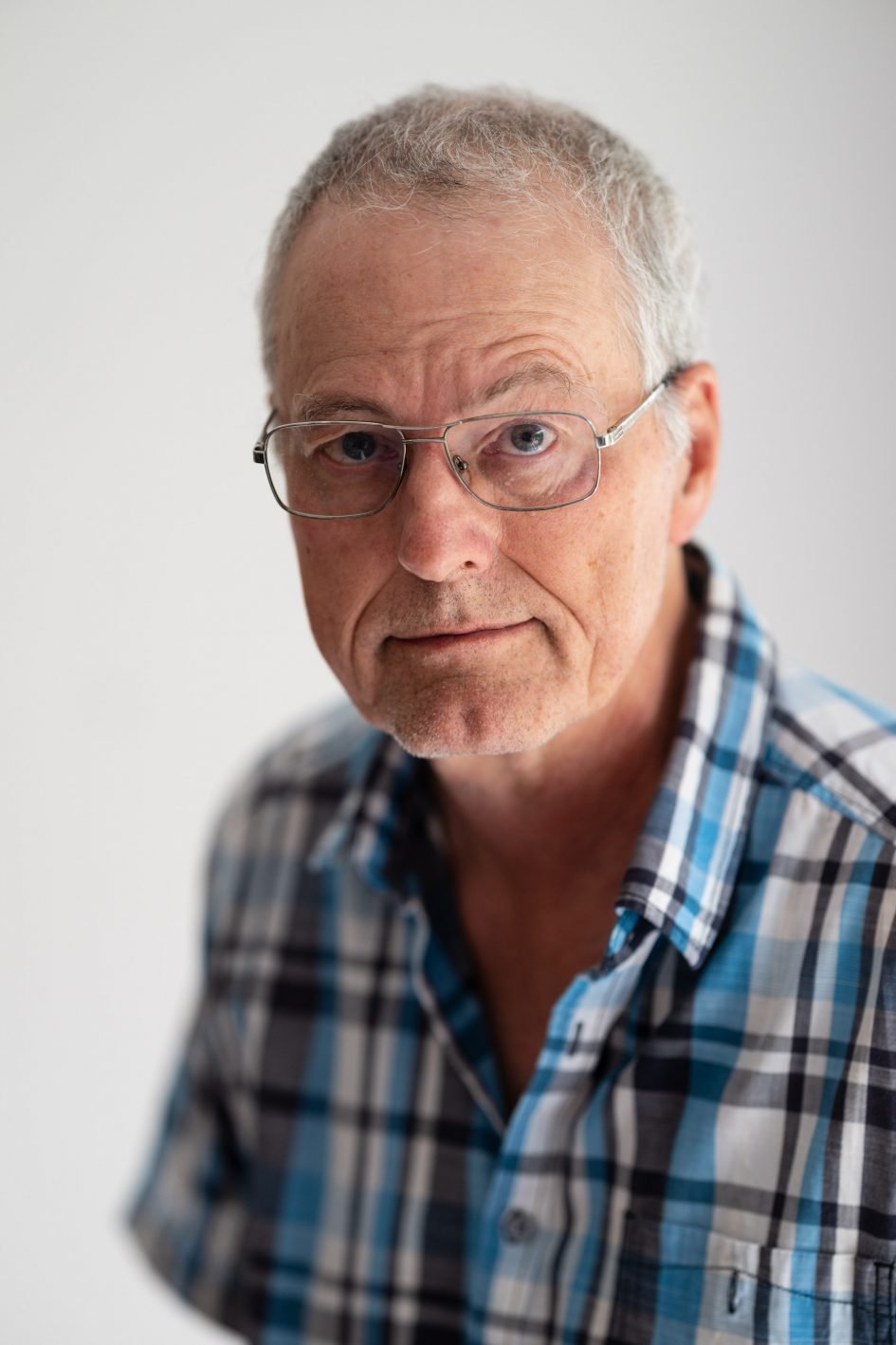
Above: Nikon Z 135mm f1.8 S Plena at f1.8; click image for 4k version, here for large original

Above: Nikon Z 135mm f1.8 S Plena at f1.8, 50% crop; click image to view 100% crop
Like in the tests before the Plena renders the focal plane extremely sharp even when used wide open and then shows a very smooth blurring into the background.
I plan to add more portraiture to the test-images in the future.
Close-up performance
The Plena goes down to a very useful 1:4.8 magnification like in the following images where the area of sharp focus is 173 x 115mm. The crops shown below are from 1mm, 13mm, and 20mm off the center of the sensor respectively:
Nikon Z 135mm f1.8 S Plena, 1:4.8 magnification; 100% crops

Above: Nikon Z 135mm f1.8 S Plena at f1.8

Above: Nikon Z 135mm f1.8 S Plena at f2.8

Above: Nikon Z 135mm f1.8 S Plena at f5.6
The center is already good at f1.8 while the DX-corner profits visibly from stopping down to f2.8 and the FX-corner becomes very usable from f5.6 onwards. Field curvature is very low at MOD, in this test I had to refocus only very slightly to get optimal results. This all makes the Plena a good tool for moderate close-ups.
Flare, ghosting, and sunstars
Catching a strong light-source shining directly into the lens is always a risky business: it could produce strange colorful ghost-images or reduce contrast considerably through flare and glare. The appearance of flare and ghosting depends on factors like the aperture and the angle of the light hitting the lens. To judge the proclivity of Nikon’s Z 135mm f1.8 S Plena for these artifacts I went through a series of well calculated shots against a strong light source to provoke glare and ghosting. The lens hood was mounted in all shots. Following are two of the more extreme example results. The little bright square inset in the upper left shows the respective area with an exposure compensation of +3 EV to make it easier to see which levels of black the lens renders at that point:
Above: Flare and ghosting. Strong light hitting the Nikon Z 135mm f1.8 S Plena at f11; click image for 4k version or here for +3 EV exposure compensation
Above: Flare and ghosting. Strong light hitting the Nikon Z 135mm f1.8 S Plena at f1.8; click image for 4k version or here for +3 EV exposure compensation
For comparison have a look at the respective images from the Sigma 135mm f1.8 Art at f11, f11+3EV and f1.8, f1.8+3EV shot under the same conditions. The Plena produces a bit more ghosts than the Sigma Art but renders a deeper level of black which results in a better contrast under adverse contra-light conditions.
Sunstars develop at f5.6 as the aperture is still almost perfectly rounded at f4.0. They show 22 diffraction spikes from the 11 aperture blades:
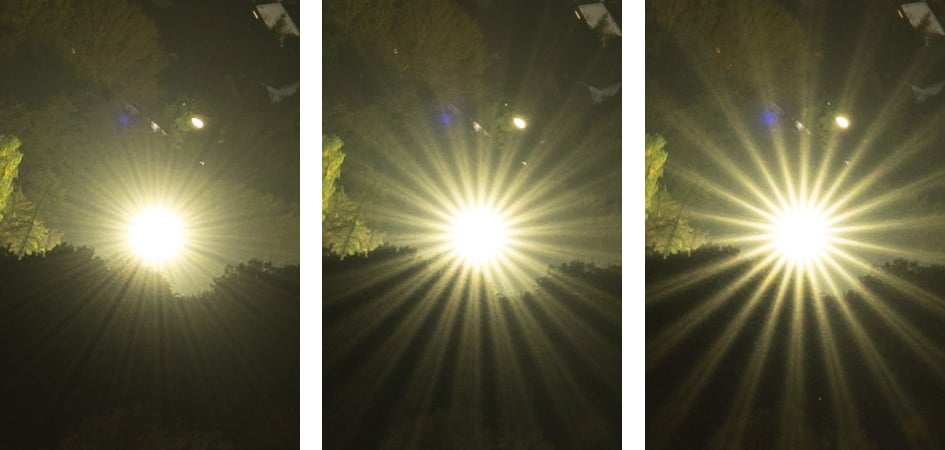
Above from left to right: Sunstars from the Nikon Z 135mm f1.8 S Plena at f4.0, f5.6, f8.0, 100% crops
Next check out my sample images!
Check prices on the Nikon Z 135mm f1.8 S Plena at B&H, Adorama, WEX UK or Calumet.de. Alternatively get yourself a copy of my In Camera book, an official Cameralabs T-shirt or mug, or treat me to a coffee! Thanks!
